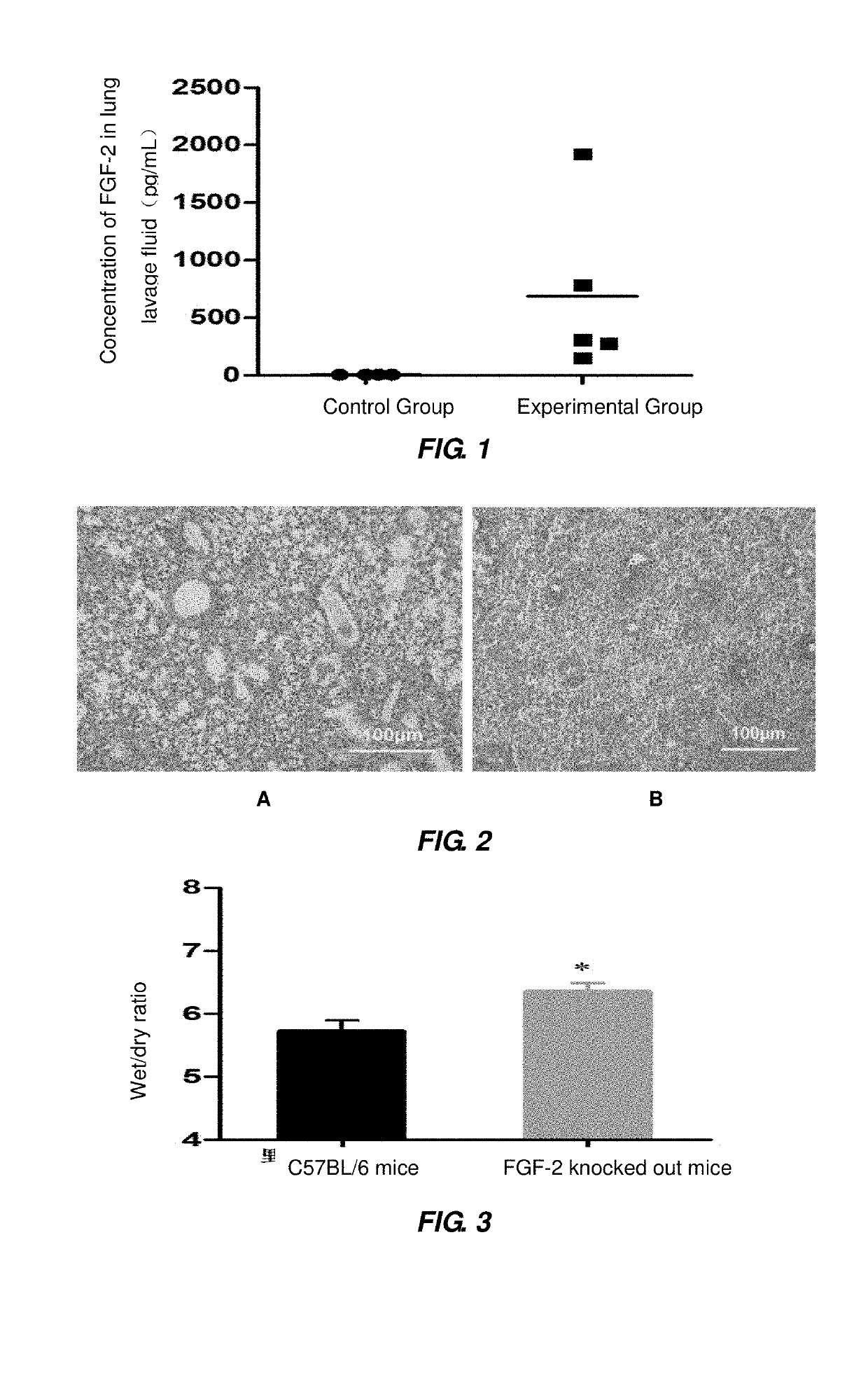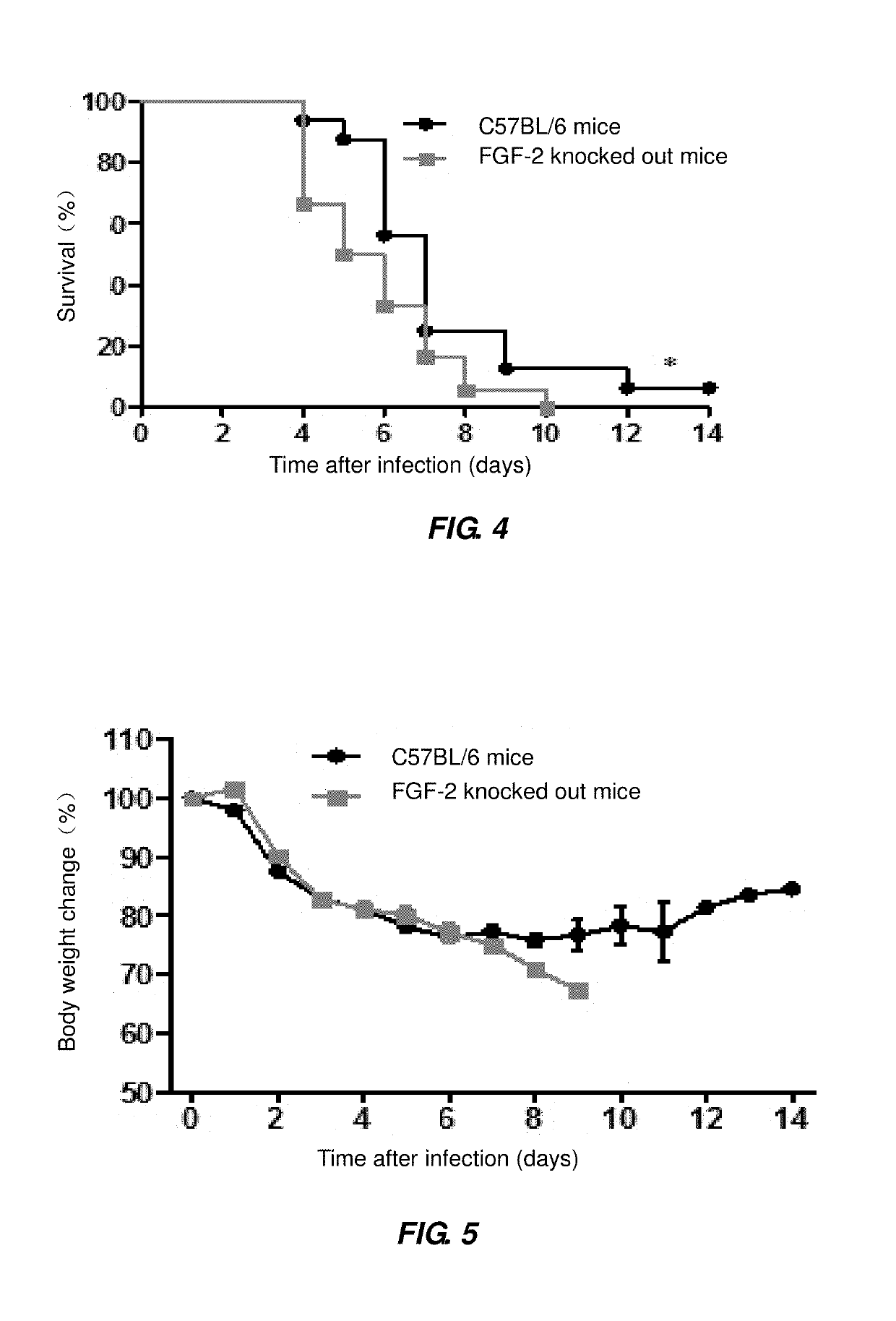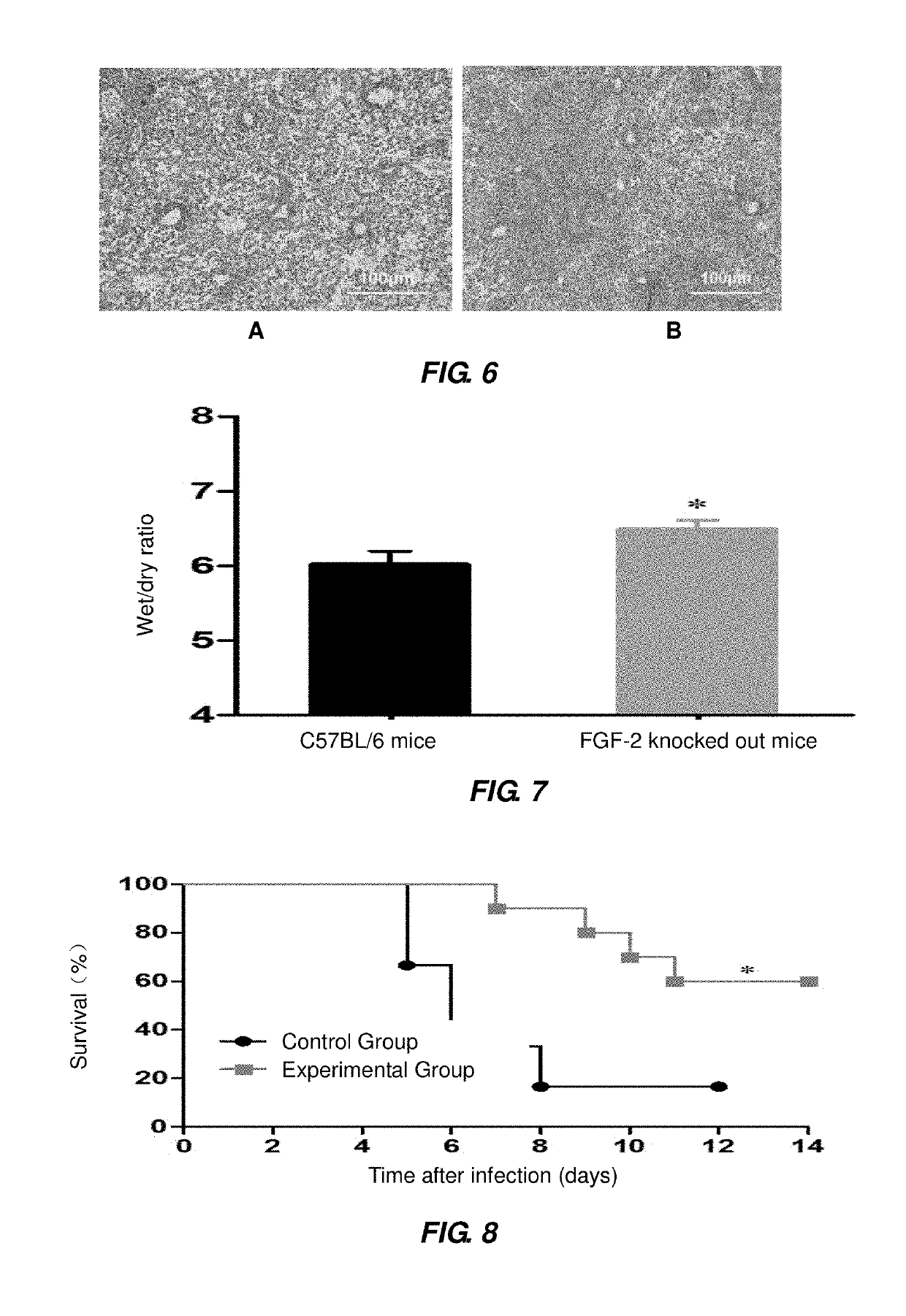Use of fibroblast growth factor 2
a growth factor and fibroblast technology, applied in the field of use of fibroblast growth factor 2, can solve the problems of reducing the volume of venous return blood, acute hypoxic respiratory dysfunction, and expansion of the microcirculation
- Summary
- Abstract
- Description
- Claims
- Application Information
AI Technical Summary
Benefits of technology
Problems solved by technology
Method used
Image
Examples
example 1
FGF-2 Level in Mouse Lung Lavage Fluid Induced by Influenza A Virus H1N1
[0069]For the experimental group (5 of 4-6 weeks old C57 BL / 6 mice): each of the mice was securely fixed, and intraperitoneally injected with 50-60 μL of 1 g / 100 mL solution of pentobarbital sodium for anesthesia; the anesthetized mice were kept with their head backward and upward leaned to bring their nasal cavities into an upward position, and 10 μL virus solution of BJ501 strain (105.5 TCID50 / mouse) was added dropwise to their nasal cavity at each side through a pipette; the mice were kept in this posture for 15 seconds, to allow the virus to enter into their respiratory tracts; 24 hours after the infection with BJ501 strain, the mice were killed by means of intraperitoneal injection of excessive anesthetic; the killed mouse was fixed on a small animal operating table, and the skin and bone of its chest were removed, a small opening was cut on its trachea, and 800 μL PBS buffer was injected into the mouse thr...
example 2
of More Serious ALI by Influenza A Virus H1N1 in FGF-2 Deficient Mice
[0072]Each of 6 of 4-6 weeks old C57BL / 6 mice (or 6 of 4-6 weeks old FGF-2 gene knocked-out mice) was securely fixed, and intraperitoneally injected with 50-60 μL of 1 g / 100 mL solution of pentobarbital sodium by a 1 mL sterile syringe for anesthesia; the anesthetized mice were kept with their head backward and upward leaned to bring their nasal cavities into an upward position, a virus solution of BJ501 strain (105.5 TCID50 / mouse) was added dropwise to their nasal cavity at each side through a pipette; the mice were kept in this posture for 15 seconds, to allow the virus to enter into their respiratory tracts; 5 days after infection with the influenza A virus, the mice were killed by means of intraperitoneal injection of excessive anesthetic; three of the killed mice were fixed on a small animal operating table, and skin and bone of their chest were removed to expose thoracic cavity, from which lung together with ...
example 3
of More Serious ALI by Influenza A Virus H1N1 in FGF-2 Deficient Mice
[0075]Each of 20 of 4-6 weeks old C57BL / 6 mice (or 20 of 4-6 weeks old FGF-2 gene knocked-out mice) was securely fixed, and intraperitoneally injected with 1 mL sterile syringe 50-60 μL of 1 g / 100 mL solution of pentobarbital sodium for anesthesia; the anesthetized mice were kept with their head backward and upward leaned to bring their nasal cavities into an upward position, 10 μL virus solution of PR8 strain (105.5 TCID50 / mouse) was added dropwise to their nasal cavity at each side through a pipette; the mice were kept in this posture for 15 seconds, to allow the virus to enter into their respiratory tracts; 14 of the mice were subjected to survival statistics (the day before the infection with influenza A virus was recorded as Day 0; from the point of the infection with influenza A virus, 24 hours later was recorded Day 1, and so on) and weight monitoring; the remaining 6 mice were killed by means of intraperito...
PUM
| Property | Measurement | Unit |
|---|---|---|
| molecular weight | aaaaa | aaaaa |
| temperature | aaaaa | aaaaa |
| concentration | aaaaa | aaaaa |
Abstract
Description
Claims
Application Information
 Login to View More
Login to View More - R&D
- Intellectual Property
- Life Sciences
- Materials
- Tech Scout
- Unparalleled Data Quality
- Higher Quality Content
- 60% Fewer Hallucinations
Browse by: Latest US Patents, China's latest patents, Technical Efficacy Thesaurus, Application Domain, Technology Topic, Popular Technical Reports.
© 2025 PatSnap. All rights reserved.Legal|Privacy policy|Modern Slavery Act Transparency Statement|Sitemap|About US| Contact US: help@patsnap.com



